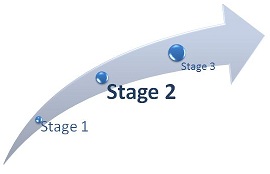 2014 EHR Certifications
2014 EHR Certifications
By Anthony Brino, Associate Editor Government Health IT and Diana Manos, Healthcare IT News
As the end of 2013 closes in, most federal certification bodies are noticing an uptick in the number of vendors who are applying to become certified under the 2014 criteria — the same criteria that will be required for the EHR products providers must use to attest to meaningful use Stage 2.
“It has been a slow start. They’re working hard. They’re struggling a little bit, said Alisa Ray, executive director and CEO of the Certification Commission for Health Information Technology, CCHIT, adding that when comparing Stage 1 to Stage 2 certification, vendors are “navigating a higher bar and increased complexity.”
Ray said there are three areas of Stage 2 that are proving the most challenging for certification: clinical quality measures, interoperability, and automated measure calculation for reporting metrics.
Automated measure calculation “requires almost a whole day of testing,” she said. “There are just a lot fewer products than were there with the Stage 1 or 2011 criteria.”
CCHIT has close to 40 companies with products listed. “Of the 2011 products we certified, we’ve seen 21 or 22 percent having been completely certified to date,” Ray continued. “It’s a testament to how much harder it is.”
Amit Trivedi, healthcare program manager at ICSA Labs, added that many vendors might also be going through certification fatigue, and explained that in stage 1 there were close to 3,000 listings, and many vendors had multiple entries (Cerner had 800) but for Stage 2, so far there are fewer than 300 on ONC’s Certified Health IT Products List.
And without naming names, Ray said that “almost everyone has struggled and been surprised by the complexities,” and a number of them have had to go through several certification trials, after not meeting certain criteria. “There are companies that have been testing every year since 2006 with the CCHIT programs; it’s not like they’re novices. And when they get into it, there’s a new wrinkle or something they may not have anticipated or configured correctly.”
It’s important to keep in mind, she said, that it’s a combination of the criteria and ONC’s testing methods that really defines “the exact nuances of what the product needs to be able to do.”
For 2011 ambulatory certification, for instance, providers could pick 9 from a menu, but now they need to pick from a much larger menu set and have to do more measures, and of course communicate with patients and offer online portals.
To some extent, the vendors doing extra work for certification jives with what providers are experiencing, and will be experiencing, in Stage 2’s greater complexity and ambition.
“It’s all in the right direction, especially in interoperability,” she said. And with Stage 2 requiring Continuity of Care Documents (CCD) or Direct messaging, the path is being made somewhat more smooth for delivery transformations toward coordinated and accountable care.
Kyle Meadors, director of EHR testing at Drummond Group, Inc., agrees the requirements from Stage 1 to Stage 2 represent “a significant step up.”
“We’re telling vendors it’s a lot of little things,” he explained. “It’s the sum of the parts that will get to you.”
Mark Shin, COO at InfoGard Laboratories, Inc. said when the meaningful use Stage 2 requirements came out earlier this year, his company saw “an extreme drop-off” in the number of applications for certification.
“It’s hard to tell why,” he said. “Maybe they weren’t ready. Maybe they were getting a better grasp of the requirements.” But, lately there has been an uptick of about a call a day for certifications, and “our impression of the technology and products is that a majority of them are ready.”
Network Infrastructure Services at Surescripts, where they provide certification for Direct messaging, a requirement for Stage 2 of meaningful use, has a similar impression, according to vice president Matt Koehler.
“Vendors are very anxious to get [Direct] done and have already completed their certification or are planning on doing it by the end of the year,” Koehler said. “It looks like they’re on course.”
Mallory Woods, account executive at SLI Global Solutions, said SLI has “definitely” seen a major increase in vendors applying for certification over the entire second half of 2013 and volume seems to be increasing for 2014 certifications.
“I would say in regards to vendors being prepared for testing that we are seeing the same challenges that occur with any QA and testing effort when developing new or enhanced products, that is, it takes time and diligence on the vendor’s part to make sure they put in the work to be prepared,” Woods wrote to Government Health IT in an email. “The timeline for when the 2014 criteria was released to when testing was picking up compared to the 2011 criteria is definitely more aggressive.”
Meadors said Drummond is also seeing an increase in vendors applying to be tested, however he recommends that vendors who aren’t ready shouldn’t push it. Vendors who “can manage user expectations” may find “some wisdom” in the approach of waiting to test, if they need more time to prepare, he said.
This article was originally published on Government Health IT and is republished here with permission.
